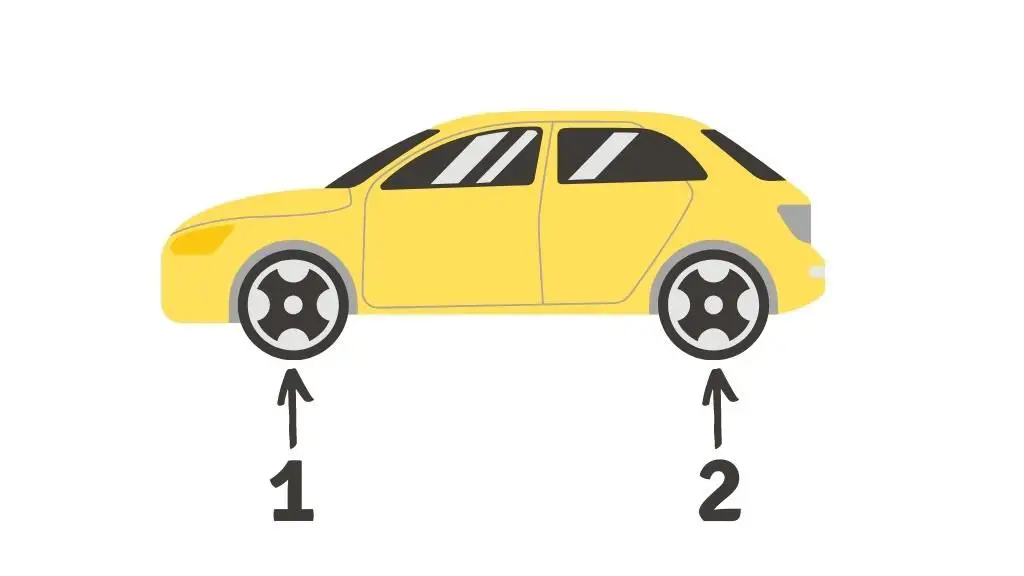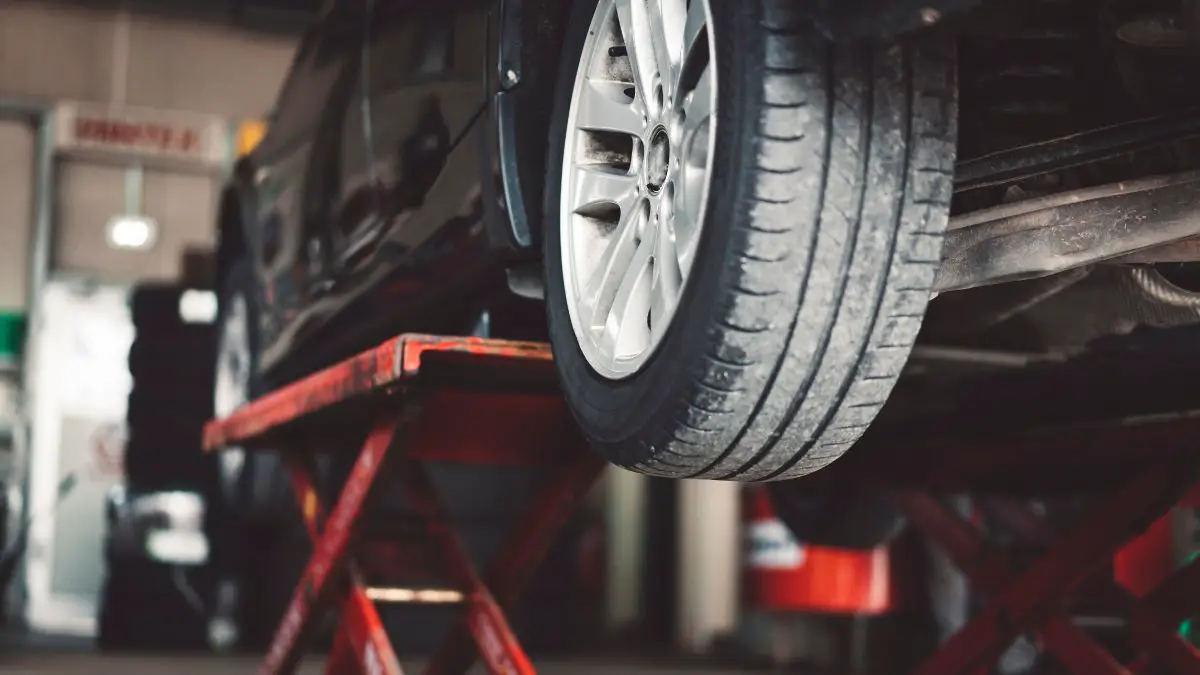If you’re not all that familiar with cars, it can seem like somebody is speaking in another language when they’re talking about them. There are axles, tires, wheels, CV boots, injectors, and so much more.
But while it can be a little frustrating trying to figure everything out, knowing some of the basic terminologies is key to keeping up with your vehicle and ensuring you don’t get ripped off the next time you take your vehicle to a repair shop.
And one question that you’re sure to need an answer to at some point is how many axles does a car have? That’s because mechanics often need to do work to both sides of an axle, or they’ll charge you per axle.
The next time they do, you should know just how many axles your car has; that way, you don’t end up getting ripped off or look like you don’t have a clue when they bring it up.
How Many Axles Does a Car Have?
The short answer to how many axles a car have is two. While this isn’t always the case, it’s pretty much as close as it gets.
If you’re trying to answer how many axles does a car have for your specific vehicle or another vehicle you’re looking at, all you really need to do is count the number of wheels you can see from one side of the vehicle.

For vehicles with dual rear wheel setups, only count the outermost wheel. While you’re not counting axles here, the axles attach the wheels from one side of the vehicle to the wheel on the other side. So, if there’s a wheel on that side, then there’s an axle behind it that you can’t see.
Does The Drivetrain Affect the Number of Axles?
One of the most common questions, and the most common ways a mechanic tries to pull a fast one on a customer, is to tell them that the number of axles your vehicle has depends on if it’s a two-wheel-drive or four-wheel-drive.
They’ll try to claim that four-wheel-drive vehicles have four axles, and if they get to charge by the number of axles for the job, they get to charge twice as much as they should.
Please don’t fall for it. It doesn’t matter what type of drivetrain your vehicle uses; it does not affect the number of axles your vehicle has.
Either the mechanic is trying to rip you off, or they don’t have a basic understanding of your vehicle. Either way, that’s not something you want with the person working on your vehicle. So if a mechanic is trying to tell you this, it’s time to find a new mechanic.
What Kind of Vehicles Have More Than 2 Axles?
We started this article by stating that some vehicles have more than two axles. While it’s not something that you’ll typically find with passenger vehicles, some vehicles do come with more than two axles.
Common examples of this are semi-trucks. Semi-trucks have three axles on the truck portion of their vehicle, and typically the trailer will have another axle. Garbage trucks also typically have three axles, as do many pieces of construction equipment.
Finally, very rarely will you find a passenger truck with more than two axles. These trucks are almost always custom modded, meaning they don’t come from the factory that way. But if the driver wants to up the payload adding another axle is an extremely costly but effective way to do that.
Finally, there are some vehicles that come with four or more axles. However, these vehicles are almost specialty vehicles that companies use to haul very heavy materials.
What Part of a Car Is the Axle?
Alright, so we know the axle is behind the wheel, but what exactly is the axle? Well, this is where it gets a bit tricky. Because if you’re trying to point at just one component and say, “that’s the axle,” you will be a little disappointed.
That’s part of what makes it so confusing when you’re trying to answer the question of how many axles a car has.
Instead of a single component, a vehicle axle consists of several components. Front axles typically consist of a steering rack, CV boots, control arms, and even hubs. Sometimes you can count specific suspension pieces, such as springs, into the axle too.
Meanwhile, the rear axle consists of fewer steering components, but there’s a rear differential on there in addition to the hub and suspension components.
Also read: How Long Can You Drive with Bad Control Arm Bushings?
How Do You Know If Your Car Has a Damaged Axle?
With so many different components in the axle, quite a few different symptoms can point you in the direction of a damaged axle component. Still, when most people are talking about a damaged axle, they’re talking about a damaged axle joint.
It’s just one component that makes up the entire axle, but since it has “axle” in the name, some people just shorten it to the axle.
If your vehicle has a damaged axle shaft, you might notice a few different symptoms, and we’ve highlighted four of the most common for you here.
Just keep in mind that if there’s a problem with another component in the axle, your vehicle might display different symptoms. If there’s a problem and you can’t figure out what’s going on, take your vehicle to a certified mechanic and they’ll help you figure out what’s going on.
Clicking Noises
One of the most common and dreaded signs of a faulty axle shaft is a clicking sound when you turn your vehicle. While that clicking sound might not seem like much, it’s indicative of a big problem, so don’t put off taking it to the shop.
If you wait too long, you can end up in a dangerous situation, and there’s a good chance your vehicle will end up with further damage.
Vibrations While Driving
Let’s get one thing out of the way right away. If you’re feeling a vibration while driving, it could be many different things. A faulty axle shaft is certainly one explanation, but it could be a problem with suspension components, other steering components, something with the hub, or so much more.
However, a faulty axle shaft is certainly one possible explanation, but we wouldn’t say that it’s the most likely explanation.
Grease on the Tires
At the end of each axle shaft is a boot. This boot holds all the grease inside, and this grease lets everything move and compress when you turn the wheel.
It’s an extremely effective system, but sometimes the boot can tear. When that happens, the grease will sling out, and it often ends up on the tires. The good news is they can often just replace the torn boot instead of the entire component.
But don’t wait too long for repairs. Without the grease acting as a buffer for the different components, they’ll wear out far quicker, and you might end up needing all new axle shafts.
Clunking When Accelerating or Decelerating
Clunking is another issue where the problem isn’t always the axle shaft. But while it’s not always the axle shaft, it certainly could be. If you hear a clunking sound when accelerating or decelerating, there’s likely a bushing or bearing somewhere in the axle that is a little worn out.
Instead of holding everything in place, the component slides around when your vehicle’s momentum changes. Whether it’s the axle shaft or another part, it’s a big problem, and you’ll want to figure out what’s going on right away.
If you put off repairs, you could end up losing control of a critical system when driving, or more damage can result from excessive wear and tear.
How Much Does It Cost to Replace an Axle?
If you had to replace an entire vehicle axle, you could expect a pretty hefty bill. The good news is that it’s pretty rare to need to replace an entire axle.
However, since several components on your car have axles in the name, sometimes a mechanic will tell you that they’re replacing an axle when they’re really replacing one of these components.
One such example is the axle shaft. Your vehicle either has a straight axle or, more likely, a CV axle. Each wheel has an axle shaft though, and both axle shafts are just one component that makes up the entire axle.
But considering the cost to replace one of these axle shafts is between $800 and $1,000, you can see how replacing all the components on a single axle would add up pretty quickly.
As a general rule, expect to spend between $400 and $1,000 for a mechanic to replace any components along the axle, and the farther they have to go to the middle of the vehicle, the more it will cost.
Advantages of More Axles
When looking at additional axles on vehicles, the advantage all comes down to how much weight they can handle. And if you think about it, it makes sense; the more wheels you have on the ground, the more you can spread the weight.
But not only do more axles put more wheels on the ground, but it also spreads out the weight across all the other components in the axle. Most vehicles do just fine with two axles, but there’s a reason why vehicles hauling more weight have more axles.
Disadvantages of More Axles
While more axles increase the vehicle’s payload, it’s not a situation where more is always better. The first issue that you come up with more axles is decreased maneuverability.
More axles put more wheels on the ground, and you can only turn vehicles so sharp before those wheels start dragging across the ground. You might have a higher payload, but you’re also limiting the overall maneuverability of the vehicle.
Moreover, more axles require more components on your vehicle, and the more components there are, the more expensive it gets.
It’s also more components that can fail while driving, leading to more repairs and higher costs to keep your vehicle on the road.
Final Thoughts
Now that you know the answer to the question of how many axles does a car have, you’re well on your way to becoming car literate.
There are still quite a few more components on your vehicle but understanding how many axles your car has, and the difference between the axle and the axle shaft is an outstanding starting point.
Stay curious, keep asking questions, and you’ll know more than enough to get your vehicle in and out of the repair shop without getting ripped off or looking like you don’t know what you’re talking about in no time.

